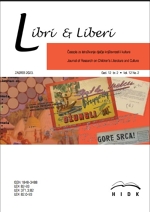Cenzura u hrvatskoj dječjoj književnosti 1945. – 1950.
Censorship in Croatian Children’s Literature 1945–1950
Author(s): Berislav MajhutContributor(s): Nikola Novaković (Translator)
Subject(s): Cultural history, Social history, WW II and following years (1940 - 1949), Theory of Literature, Pedagogy, Sociology of Literature
Published by: Hrvatska udruga istraživača dječje književnosti
Keywords: Censorship in Croatian Children’s Literature 1945–1950; literature;
Summary/Abstract: Five years a er the end of World War II, Branko Ćopić, in his article “Our Children’s Literature”, re ects on the preceding period of Yugoslav literary production for children from 1945 to 1950. Assessing the situation in Croatia, he writes (1950: 23): In Croatia, young writers show very little activity in the eld of children’s literature, even though they have a well-trodden path, especially in prose, in the works of Nazor, Ivana Brlić-Mažuranić, Mate Lovrak, Pavičić, and others. Among younger authors, only Danko Oblak shows somewhat increased activity, while older writers for children, such as Mato Lovrak, Josip Pavičić, Sonja Sever, and others, remain both the most widely read and the most active authors. What could be the reasons for “very little activity in the eld of children’s literature” in Croatia between 1945 and 1950? Apart from the obvious reasons, such as many children’s writers not surviving the war or its a ermath (the Bleiburg repatriations, the Way of the Cross marches, purges and persecution a er the war), or emigrating, part of the answer may lie in the fact that a signi cant number of children’s writers and professionals in the eld of children’s literature (translators, editors) were expelled from public life, depriving them of the right to publish.
Journal: Libri & Liberi: časopis za istraživanje dječje književnosti i kulture
- Issue Year: 12/2023
- Issue No: 02
- Page Range: 331-395
- Page Count: 65
- Language: Croatian

